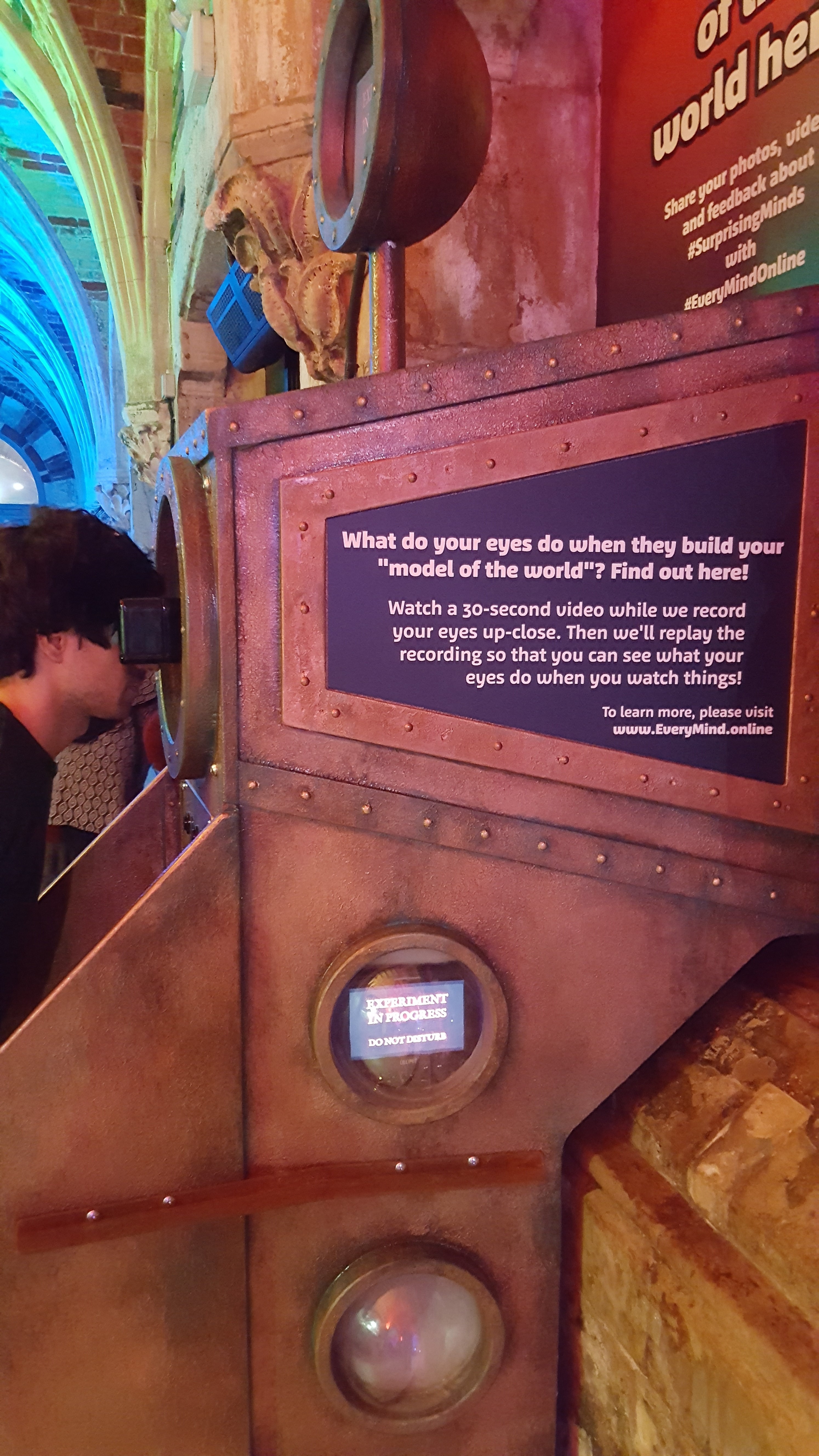Automating and upgrading the exhibit
Today the exhibit got a major update, based on things we learned from over the summer. Below are sketches I made to plan out this update, which I originally drew on August 13, 2017.


Additional graphics and feedback
Over the summer, the exhibit was always hosted by a human (either Reanna or me), who would explain the purpose of the interactive station and how to use it. This made for a nice interaction point in the aquarium for Sea Life visitors, but it also meant that when no one was available to host the exhibit, visitors were clueless about how to use the interactive station, and that area became a bit of a dead space.
Hosting the exhibit did, however, enable us to learn exactly what phrasing would be most clear and engaging to Sea Life Centre visitors. Turns out, when you say something 50-100 times a day, you get really good at saying it as effectively and efficiently as possible.
So, based on the knowledge gleaned from over 200 collective hours of hosting the Surprising Minds exhibit, we created new panels for the sides of the interactive station.




New viewing mask design
The original mask design used in the summer pilot was already starting to erode from use. There were also some concerns about hygiene also came up – the mask was just a flat piece of foam on an acrylic plate, meaning that people’s noses and mouths touched the acrylic plate. When the exhibit was hosted, we would keep some baby wipes on hand to clean the viewing plate at least once a day, but this would be an impractical solution for a fully automated exhibit.
To address this issue, Hazel designed and built a new viewing mask that bumps out further away from the viewing plate, keeping people’s noses and mouths from touching the interactive station.

New calibration sequence
We also made some changes to the calibration sequence in order to make it easier for visitors to give us good data. Before, the exhibit host always had to give verbal feedback to each participant, letting them know whether or not their eye was centered. Now, participants are shown what the eye-recording cameras see during the calibration sequence, so that they can self-adjust the placement of their face in the viewing mask.
Multi-language content
The Sea Life Centre often has foreign language student visitors, especially over the summers. When explaining the exhibit, we were often lucky enough to get at least one person in a foreign language visitor group who knew enough English to understand the host, then translate our words to the rest of the group. Sometimes, however, no one knew English well enough to understand our host, and we lost an opportunity to engage them.
We decided to expand the accessibility of the exhibit by offering five language options at the interactive station: French, English, German, Italian, and Mandarin Chinese. We also translated the Surprising Mind website’s homepage into ten languages: French, German, Italian, Mandarin Chinese, Spanish, Portuguese, Greek, Dutch, Romanian, and Korean.


Leave a Comment